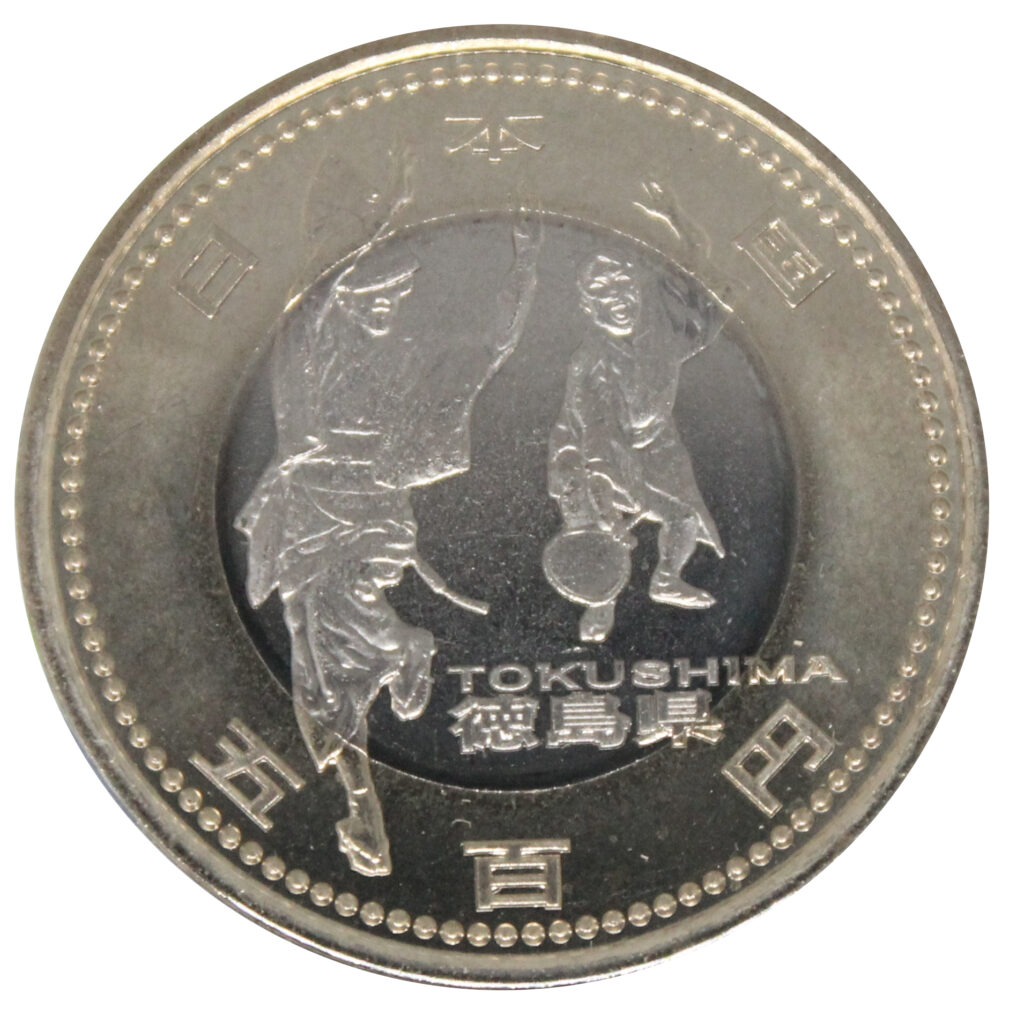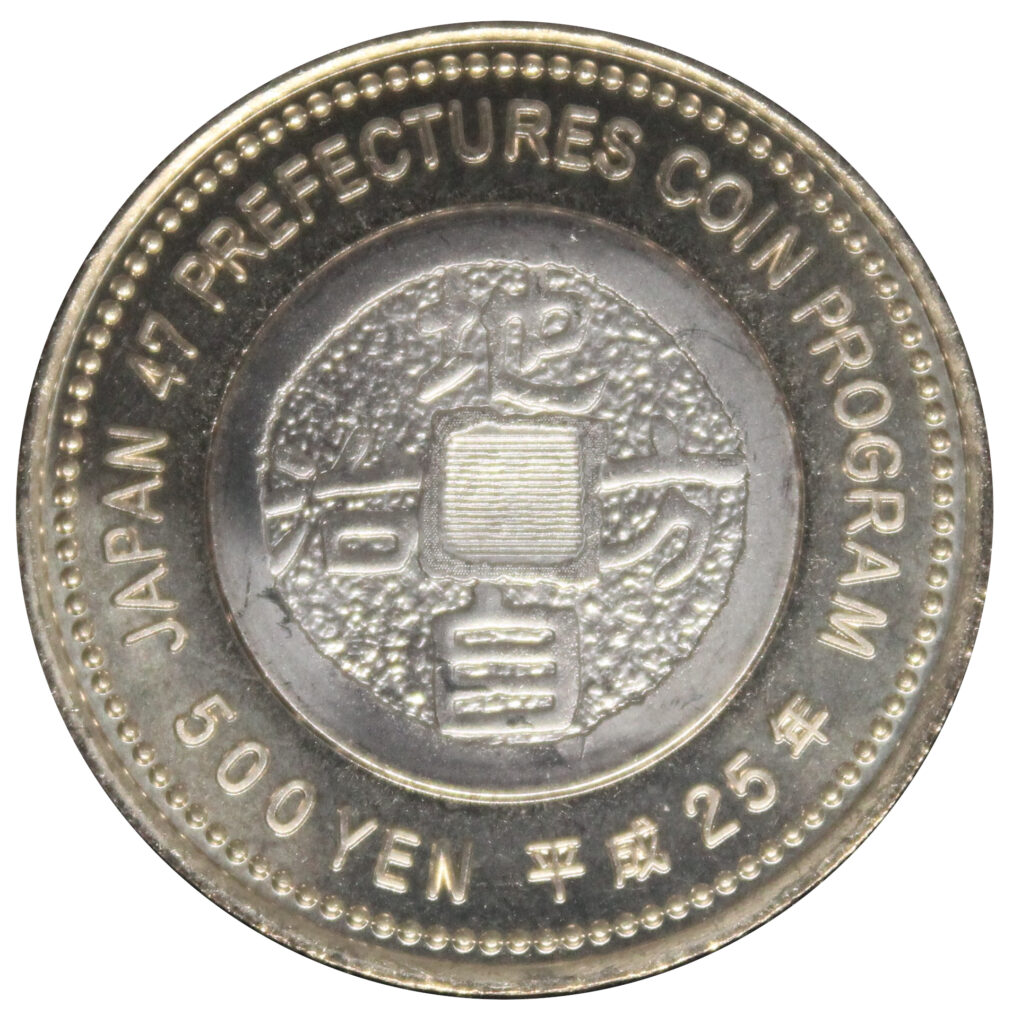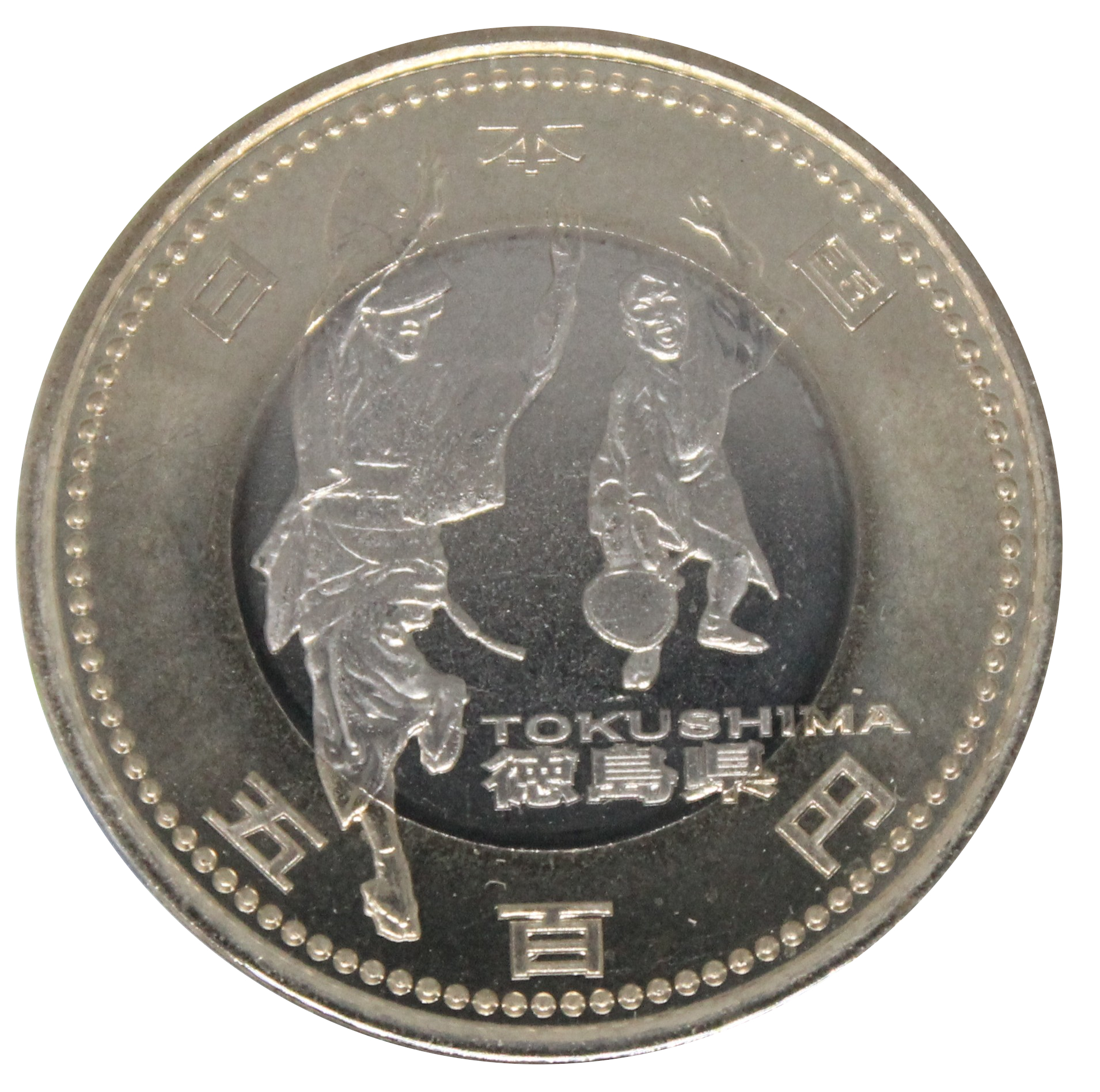

| Material | Nickel-brass, Cupronickel and Copper |
| Composition | Copper 750 Zinc 125 Nickel 125 |
| Weight | 7.1g |
| Diameter | 26.5mm |
| Year of Production | 2015 |
A 500 yen coin made to commemorate the 60th anniversary of the enforcement of the Local Autonomy Law.
There are 47 types, the same as the number of prefectures in Japan.
It is made by combining two technologies: “Cladd,” in which another type of metal plate is inserted between two metal plates, and “Bicolor,” in which another metal is placed in a disk. “Baikara Clad
There are jagged edges on the sides, and only four places are shaped differently from the rest.
The reverse side is the same.
The design imitates the coins of the Edo period.
It is written in kanji as “local Autonomy” in four characters.
The year and “JAPAN 47PREFECTURES COIN PROGRAM” are engraved.
The obverse has a different design for each prefecture.
The surface of the coin depicts a traditional Japanese festival called Awaodori, which is famous in Tokushima.
Tokushima Prefecture’s Awa Odori dance festival has a history of more than 400 years.
For five days from August 11 to 15 every year, more than one million tourists from Japan and abroad visit Tokushima City for the festival.
There are several theories about the origin of Awa Odori, including the “castle-building origin” theory that the dance was originally performed in 1586 to commemorate the construction of Tokushima Castle when the people of the castle were allowed to attend a rude assembly inside the castle, and the “Bon Odori origin” theory that the dance started as an ancestor memorial service that continued from the Nenbutsu Odori of the Kamakura Period.
The Awa Odori dance is so familiar to newcomers that it has long been referred to as “Awa Odori if you raise your hands and walk to the dance.


